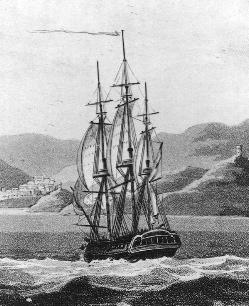Ceratotherium mauritanicum
Ceratotherium mauritanicum| Ceratotherium mauritanicum 시간 범위:2.6–0.008 엄마 PreꞒ Ꞓ OSDCPTJKPg N↓ 후기 Pliocene–.완신세 | |
|---|---|
| 과학적 분류 | |
| 킹덤: | 동물계 |
| Phylum: | 척색 동물문. |
| 클래스: | 포유류 |
| 순서: | 페리스소닥틸라속 |
| 패밀리: | 코뿔소과 |
| 지누스: | Ceratotherium |
| 종: | †C. mauritanicum |
| 이항식 이름 | |
| †Ceratotherium mauritanicum (Pomel, 1888년) | |
| 동의어 | |
| |
화석 아프리카 코뿔소의 Ceratotherium mauritanicum 종 후기 선신세에 홀로세 모로코, 튀니지, 알제리의 earliest에 발견했다.[1] 선신세 동부 아프리카 출신의 약간 나이 든 화석도 이 species,[2]에 속해 있지만 다소 원시적인 종, Ceratotherium efficax에 속하는 것을 간주해 왔다 제안했다.[3] A2020년 연구 Cmauritanicum'Cefficax은 같은 종, 하지만 생각한다.[4]
진화
Cmauritanicum의 계통 발생적 위치는 다소 논란이 되고 있는 있다. 로 조상의 원시적인 Ceratotherium neumayri, 사는 흰 코뿔소들( 흰 코뿔소)사이의 일직선 방향에 위치해 있는 어느 모델이 참조하십시오.[2] 또는 그것 Ceratotherium efficax의 후손이었고, Csimum에 멸종된 여동생 분류 군 제안되었다. 그것은 동시에 로사 Ceratotherium의 동부와 남부 아프리카에서 가장 진보적인 진화에 원시적인 캐릭터들을 잃지 않았다.[3]
분포
Cmauritanicum 널리 북서부 아프리카를 횡단하는 제4기간 동안 종종 고고학 유적지와 관련된 분배되었다.[1] 암각화 북 아프리카의 가끔 rhinoceri지만 때 자주 너무 무늬가 있는 종의 구분을 없앨 수 있도록 도식화된 것을 주로 묘사한다.[5] 사람들은 보여 주는 캐릭터들이 흰 코뿔소들의 전형적인 사실은 삶에서 외관에서 유사한 수도 있어 C.mauritanicum 대신 Csimum를 보여 줄 수 있다. 그것은 중석기 시대 동안 현재 증거는 없결국 역사적 시대에 살던은 사라졌다.[1]
고생물학
C. 모리타니쿰은 현존하는 C. 심럼과 매우 유사한 생태계를 가지고 있었다고 여겨진다. 그것은 충분한 물과 식물이 있는 열린 사바나 풍경에서 살았는데, 초기 홀로세 이후 마그레브에서 사라진 생물체였다. 그것의 음식은 아마도 풀에 의해 지배되었을 것이다.[1]
참조
- ^ a b c d Guérin, C. & Faure, M. (2007). "XI. Étude paléontologique sur les mammifères du Pléistocène supérieure de l'oued El Akarit" (PDF). In Roset, J.-P. & Harbi-Riahi, M. (eds.). El Akarit - Un site archéologique du Paléolithique moyen dans la sud de la Tunisie. Éditions Recherche sur les Civilisations. pp. 365–388. ISBN 978-2-86538-310-8.
- ^ a b Geraads, D. (2005). "Pliocene Rhinocerotidae (Mammalia) from Hadar and Dikika (Lower Awash, Ethiopia), and a revision of the origin of modern African rhinos". Journal of Vertebrate Paleontology. 25 (2): 451–461. doi:10.1671/0272-4634(2005)025[0451:PRMFHA]2.0.CO;2.
- ^ a b Hernesniemi, E.; Giaourtsakis, I.X.; Evans, A.R. & Fortelius, M. (2011). "Chapter 11 Rhinocerotidae". In Harrison, T. (ed.). Palaeontology and Geology of Laetoli: Human Evolution in Context. Volume 2: Fossil Hominins and the Associated Fauna. Springer Science+Business Media B.V. pp. 275–294. ISBN 978-90-481-9961-7.
- ^ Geraads, D. (2020). "Perissodactyla (Rhinocerotidae and Equidae) from Kanapoi" (PDF). J. Hum. Evol. 140: 102373. doi:10.1016/j.jhevol.2017.07.013. PMID 28966048. S2CID 12522299.
- ^ Osborn, D.J.; Osbornová, J. (1998). The Natural History of Egypt: Vol. IV. The Mammals of Ancient Egypt (PDF). Warminster: Aris & Phillips Ltd. pp. x+213. Retrieved October 9, 2012.


